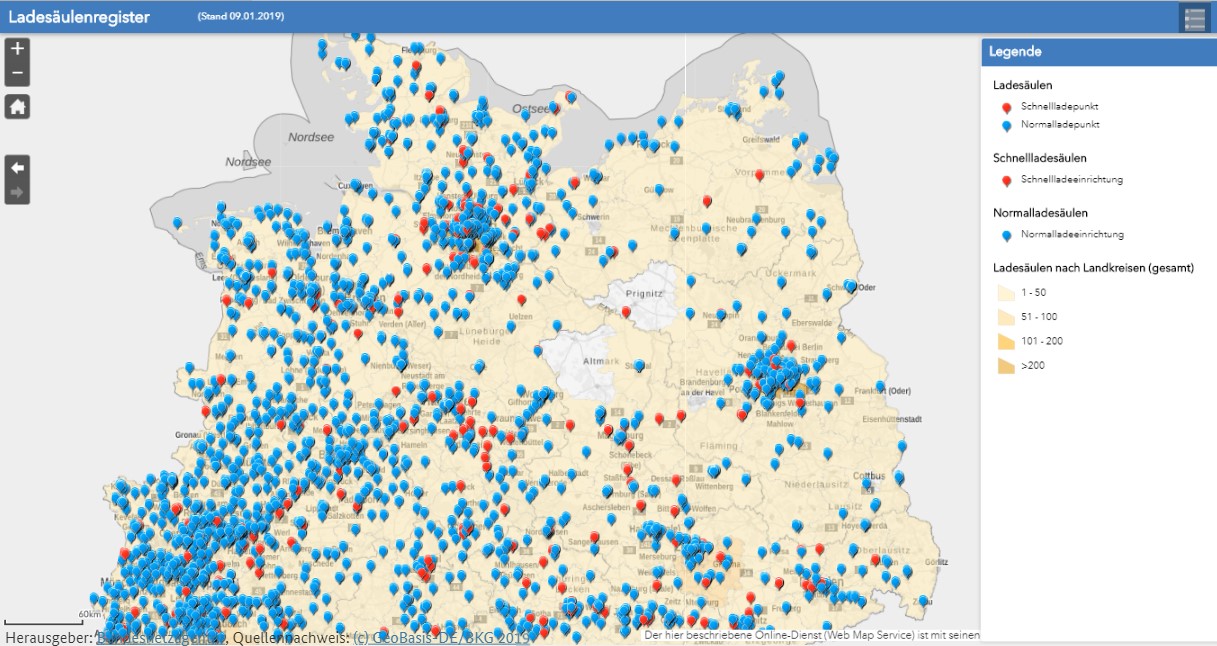Charging infrastructure - inventory and expansion planning
Current charging infrastructure
The inadequate public charging infrastructure is a major obstacle to the successful transition to electro mobility. According to calculations by the NPE (2015), around 85 percent of the required charging infrastructure is private charging points. The remaining 15 percent are in the public area. Most users use a private charging facility.
Another problem is the very divergent information on the available charging stations.
The Federal Network Agency (Bundesnetzagentur) provides a charging station register with 11,600 charging stations (Ladesäulenregister der Bundesnetzagentur, as of January 2020) for download (CC-BY 4.0) of the data on the publicly accessible charging infrastructure in Germany reported within the framework of the Charging Station Ordinance (LSV).
Currently (as of December 2019) around 23,840 public and semi-public charging points of energy companies, parking garage and car park operators, supermarkets and hotels are recorded by the German Energy Industry Association (BDEW). This is an increase of over 50 percent within one year. The share of fast charging stations is around 12 percent.
BNetzA charging station register (January 2019)
Search for data on the charging infrastructure yourself. How do the different data originate? Explore your local environment, for example.
What data is provided for the charging stations?
Is this list complete or do you know of other charging stations in your area that are not included here?
What is the reason for this?
Anderson et al. (2016) determine a charging infrastructure requirement for the targeted one million electric vehicles in Germany in 2020 of approx. 33,000 public and semi-public charging points for everyday traffic, as well as approx. 2,600 public charging points for long-distance traffic. Depending on the design of the normal charging infrastructure and the desired security of supply, up to an additional 4,000 rapid charging points are advisable.
According to Anderson, 2016, p. 7, research on charging infrastructure focuses primarily on the three areas of optimisation, analyses of spatial distribution and recommendations for setting up charging stations. According to Anderson, 2016, p. 14, many influencing factors are not yet sufficiently known, such as technical factors (e.g. electrical range and charging speed), characteristics of users (e.g. availability of private charging infrastructure) or user behaviour with regard to driving behaviour and charging preferences. Anderson et al., 2016, p. 27 also derive route-related charging processes in long-distance traffic as density maps using routing algorithms.
The video from the ARD media library provides an interesting insight into the further development of the charging infrastructure using the example of Hesse:
https://www.ardmediathek.de/tv/defacto/Große-Pläne-für-die-Elektromobilität-D/hr-fernsehen/Video?bcastId=3437388&documentId=47170914 <br/ >
If the video is no longer available, look for alternatives.
